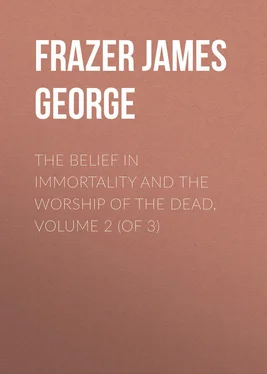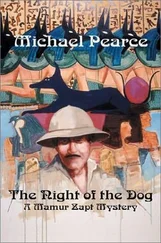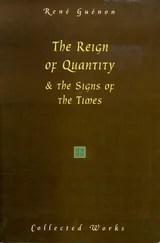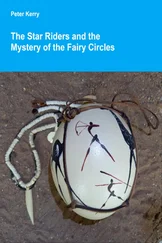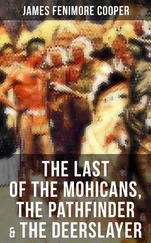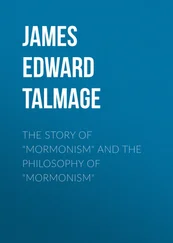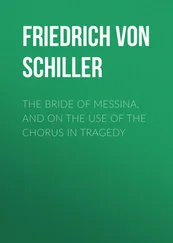James Frazer - The Belief in Immortality and the Worship of the Dead, Volume 2 (of 3)
Здесь есть возможность читать онлайн «James Frazer - The Belief in Immortality and the Worship of the Dead, Volume 2 (of 3)» — ознакомительный отрывок электронной книги совершенно бесплатно, а после прочтения отрывка купить полную версию. В некоторых случаях можно слушать аудио, скачать через торрент в формате fb2 и присутствует краткое содержание. Жанр: foreign_antique, foreign_prose, на английском языке. Описание произведения, (предисловие) а так же отзывы посетителей доступны на портале библиотеки ЛибКат.
- Название:The Belief in Immortality and the Worship of the Dead, Volume 2 (of 3)
- Автор:
- Жанр:
- Год:неизвестен
- ISBN:нет данных
- Рейтинг книги:3 / 5. Голосов: 1
-
Избранное:Добавить в избранное
- Отзывы:
-
Ваша оценка:
- 60
- 1
- 2
- 3
- 4
- 5
The Belief in Immortality and the Worship of the Dead, Volume 2 (of 3): краткое содержание, описание и аннотация
Предлагаем к чтению аннотацию, описание, краткое содержание или предисловие (зависит от того, что написал сам автор книги «The Belief in Immortality and the Worship of the Dead, Volume 2 (of 3)»). Если вы не нашли необходимую информацию о книге — напишите в комментариях, мы постараемся отыскать её.
The Belief in Immortality and the Worship of the Dead, Volume 2 (of 3) — читать онлайн ознакомительный отрывок
Ниже представлен текст книги, разбитый по страницам. Система сохранения места последней прочитанной страницы, позволяет с удобством читать онлайн бесплатно книгу «The Belief in Immortality and the Worship of the Dead, Volume 2 (of 3)», без необходимости каждый раз заново искать на чём Вы остановились. Поставьте закладку, и сможете в любой момент перейти на страницу, на которой закончили чтение.
Интервал:
Закладка:
But on no occasion, perhaps, was the assimilation of dead men to gods so conspicuous as at the annual offering of first-fruits, which seems to have been the most impressive of all the yearly rites observed by the Tongans. The ceremony was observed once a year just before the yams in general had arrived at a state of maturity; the yams offered at it were of a kind which admitted of being planted sooner than the others, and which consequently, ripening earlier, were the first-fruits of the yam season. The object of the offering was to ensure the protection of the gods, that their favour might be extended to the welfare of the nation generally, and in particular to the productions of the earth, of which in Tonga yams are the most important. At this solemn ceremony the new yams, slung on poles, were brought from distant islands, carried in procession to the grave of the late Tooitonga, and deposited in front of it, their bearers sitting down beside them. Thereupon one of the ministers ( matabooles ) of the living Tooitonga arose, advanced, and sat down before the grave, a little in front of the men who had brought the yams. Next he addressed the gods generally, and afterwards particularly, mentioning the late Tooitonga and the names of several others. In doing so he returned thanks for their divine bounty in favouring the land with the prospect of a good harvest, and prayed that their beneficence might be continued in future. In this harvest thanksgiving the spirit of the dead Tooitonga seems to have ranked on an equality with the original or superhuman gods; indeed, in a sense he took precedence of them, since the offerings were presented at his grave. The first-fruits, we are told, were offered to the gods in the person of the divine chief Tooitonga. 305 305 W. Mariner, Tonga Islands , ii. 196-202, compare p. 78. The ceremony was also witnessed, though not understood, by Captain Cook ( Voyages , v. 363 sqq. ) and by the first English missionaries (Captain James Wilson, Missionary Voyage to the Southern Pacific Ocean , pp. 264 sq. ).
On the whole we may conclude that, however sharp a distinction was drawn in theory between the old gods, who had always been gods, and the new gods, who had once been men, the line which divided them in practice was wavering and blurred. The dead men and women were fast rising, if they had not already risen, to an equality with the ancient deities. We may even surmise that some of these old gods themselves were human beings, whose original humanity was forgotten.
The tombs of the kings and sacred chiefs may be described as megalithic monuments in so far as immense stones were often employed in the construction either of the enclosing walls or of the high steps which led up to the summit of the mound where the grave was dug. It is possible, and indeed probable, that great stones were similarly employed as ornaments or accessories of the consecrated houses or temples of the primary gods, but of such an employment I have met with no express notice among our authorities. So far as their descriptions allow us to judge, these megalithic monuments of the Tongans were purely sepulchral in character; they were dedicated only to the worship of the dead. But there exists at least one other remarkable megalithic monument in these islands of which the original meaning is quite uncertain, and of which consequently we cannot confidently say that it was erected for the sake of honouring or propitiating the spirits of the departed. The monument in question is situated near the eastern extremity of Tongataboo, at a distance of three or four hundred yards from the beach and facing towards the island of Eua. The land on which it stands was the private property of the Tooitongas, whose megalithic tombs are situated some eight or nine miles away to the west. In the intervening country, which is perfectly flat and partly covered with forest, partly under cultivation, there are said to be no other monuments or ruins. It is remarkable that this imposing monument, which naturally impresses the observer by its resemblance to the trilithons or gate-like structures of Stonehenge, should have apparently escaped the observation of Europeans down to the middle of the nineteenth century. It is not mentioned by Cook and Mariner, nor even by those who, like the first missionaries and Dumont d'Urville, described in some detail the tombs of the Tooitongas not many miles off. Perhaps the solitariness of the surrounding country may partly account for their ignorance and silence; for there are said to be few inhabitants in this part of the island and none at all in the immediate neighbourhood of the monument. It seems to have been first discovered by Mr. Philip Hervey of Sydney in 1850 or 1851, but his description of it was not published for some ten years. In August 1852 it was seen by Dr. Charles Forbes, Surgeon of H.M.S. Calliope , and his description of it was published by the Society of Antiquaries of London in the following year. In 1865 it was seen and briefly described by Mr. Foljambe of H.M.S. Curaçoa . Some twenty years later the passengers of the s.s. Wairarapa , on a yachting cruise from New Zealand, visited the spot and published an account of the structure. Still later Sir Basil Thomson examined the monument and discussed its history. 306 306 See the letter of Dr. Charles Forbes, in Archaeologia, or Miscellaneous Tracts relating to Antiquity , xxxv. (London, 1853) p. 496 (with a woodcut); Proceedings of the Society of Antiquaries of London [First Series], iii. 19; id. Second Series, i. 287; letter of Philip Hervey, quoted by Kenneth R. H. Mackenzie, in Proceedings of the Society of Antiquaries of London , Second Series, ii. 75-77; Julius L. Brenchley, Jottings during the Cruise of H.M.S. "Curaçoa" among the South Sea Islands in 1865 (London, 1873), p. 132 (with a woodcut); (Sir) Basil Thomson, Diversions of a Prime Minister (Edinburgh and London, 1894), pp. 380-382 (with a woodcut on p. 393); id. "Notes upon the Antiquities of Tonga," Journal of the Anthropological Institute , xxxii. (1902) pp. 81-84 (with a photograph). Views of the monument, taken apparently from photographs, have also been published by Dr. F. H. H. Guillemard ( Australasia , vol. ii. London, 1894, p. 501), Dr. George Brown ( Melanesians and Polynesians , London, 1910, plate facing p. 410), and by Mr. S. Percy Smith ( Hawaiki , Third Edition, Christchurch, N.Z., 1910, pp. 157 sq. ). Dr. W. H. R. Rivers spoke as if there were several trilithons in Tongataboo ( History of Melanesian Society , ii. 430 sq. ; id. "Sun-cult and Megaliths in Oceania," American Anthropologist , N.S. xvii., 1915, p. 444); but in this he seems to have been mistaken. So far as I can gather, there is only one of these remarkable monuments in Tongataboo or indeed in the whole of the Pacific.
The monument in question is a structure of the type known as a trilithon; that is, it is composed of three large stones, of which two stand upright, while the third rests horizontally on their tops. All three stones are monoliths of hardened coral, rough and much weathered on the surface, and precisely similar to the coral of the neighbouring reefs. Indeed, about halfway between the monument and the beach the coral rock is exposed in a hollow, from which it seems probable that the great blocks were hewn and brought to their present situation. The statement of Mr. Brenchley, that the stone of which the monument consists is not to be found elsewhere on the island, is erroneous. The uprights are quadrangular monoliths neatly squared. No measurements of the stones appear to be on record, but the two uprights are variously estimated to measure from fourteen to sixteen feet in height; their breadth or depth from front to back is variously given as from eight to ten or even twelve feet; but they seem to taper somewhat upwards, for the estimate which assigns twelve feet for the depth of the uprights at their base, mentions seven feet or probably more as their breadth at the top. The thickness of the uprights seems to be four feet. The space between them is variously stated at ten and twelve feet. The cross-stone, which rests on the two uprights, is reported to measure twenty-four feet in length, by four or five feet in depth, and two feet in thickness. Each of the uprights is estimated by Sir Basil Thomson to weigh not less than fifty tons. The tops of both are deeply mortised to receive the cross-stone, the ends of which are sunk into them instead of being laid flat on the top. The cross-stone lies east and west, so that the opening between the uprights faces north and south. On the upper surface of the cross-stone, and at about the middle of it, is a cup-like hollow, very carefully cut, about the size of a coco-nut shell. A large bowl of the same material is said to have formerly stood on the cross-stone, but the statement is not made by an eyewitness and is probably mistaken. 307 307 For the authorities, see the preceding note. The measurements, to some extent discrepant, are given by Dr. Charles Forbes, Mr. Philip Hervey, and the passengers of s.s. Wairarapa , as reported by Sir Basil Thomson Journal of the Anthropological Institute , xxxii. 82 sq. ), who had unfortunately mislaid his own notes containing the measurements. The statement that the monument was surmounted by a large bowl is made by Mr. Brenchley, in whose sketch of the structure the bowl figures. But Mr. Brenchley did not himself see the monument, and nobody else appears to have seen the bowl. I suspect that the report of the bowl may have originated in a hasty reading of Mr. Hervey's statement that "on the centre of it [the cross-stone] a small cava bowl is scooped out," though in Mr. Brenchley's account the bowl has seemingly increased in size. Similarly in his report the height of the uprights has grown to about thirty feet, which appears to be just double of their real size. Perhaps Mr. Brenchley's erroneous allegation as to the material of the monument similarly originated in a misunderstanding of Mr. Hervey's statement that "the material is the coral rock, or coral rag which are formed of stone brought from Wallis's Island."
Интервал:
Закладка:
Похожие книги на «The Belief in Immortality and the Worship of the Dead, Volume 2 (of 3)»
Представляем Вашему вниманию похожие книги на «The Belief in Immortality and the Worship of the Dead, Volume 2 (of 3)» списком для выбора. Мы отобрали схожую по названию и смыслу литературу в надежде предоставить читателям больше вариантов отыскать новые, интересные, ещё непрочитанные произведения.
Обсуждение, отзывы о книге «The Belief in Immortality and the Worship of the Dead, Volume 2 (of 3)» и просто собственные мнения читателей. Оставьте ваши комментарии, напишите, что Вы думаете о произведении, его смысле или главных героях. Укажите что конкретно понравилось, а что нет, и почему Вы так считаете.
